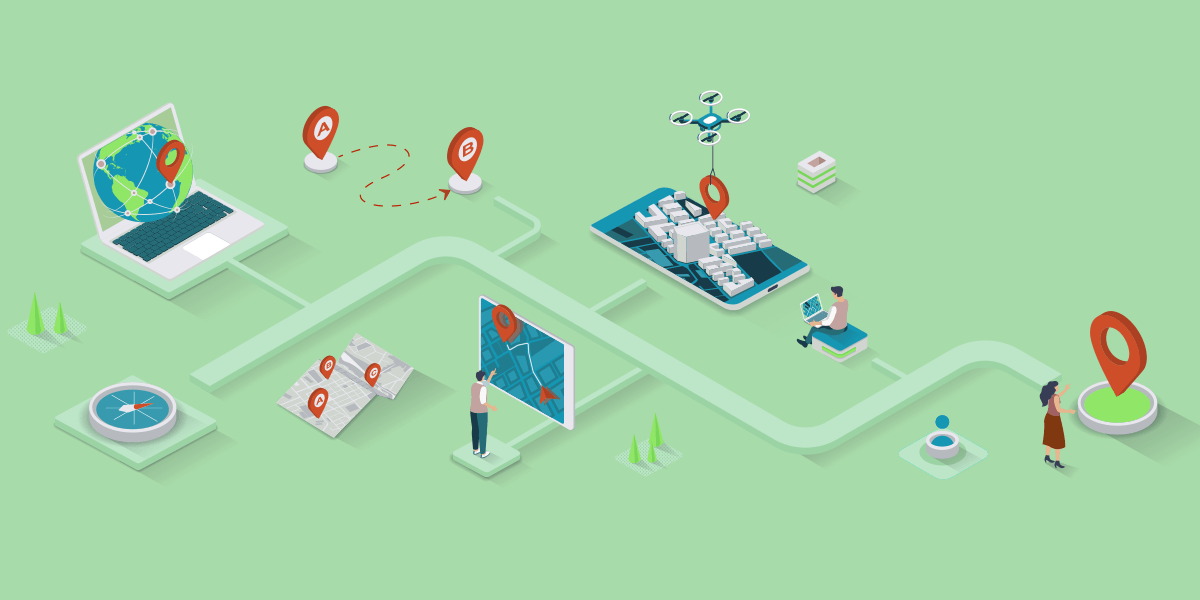In today’s ever changing digital world, learning management systems, or LMSs, are becoming more and more common. This article seeks to offer a thorough examination of the definition, development, salient characteristics, advantages, industrial uses, difficulties, and emerging trends of an Learning Management System.
LMS definition
An LMS is essentially a piece of software created to make tracking, delivering, and managing instructional materials easier. It facilitates a smooth learning process by serving as a focal hub for teachers and students.
Relevance in the Contemporary World
The importance of LMS in the modern era, where digital change is changing many parts of our life, cannot be emphasized. Learning Management System is essential for improving learning, whether it is used in corporate or educational contexts.
Learning Management System Development
Initial Steps
The history of LMS starts with simple systems that were primarily concerned with providing instruction. Technology progressed over time, transforming Learning Management System into an advanced tool that can meet a variety of learning needs.
Technological Progress
An important turning point in the development of LMS was the addition of interactive capabilities, multimedia components, and cloud-based solutions. This section explores the disruptive technologies that have influenced the development of the contemporary LMS environment.
Present Patterns
Dynamic trends like gamification, microlearning, and mobile learning define the state of the LMS today. For schools and organizations hoping to remain at the forefront of educational technology, understanding these developments is essential.
Essential Elements of an LMS
Interface That’s Easy to Use
An interface that is easy to use is essential for gaining users. The significance of a user-friendly design for facilitating easy navigation and interaction within an LMS is discussed in this section.
Management of Courses
Every LMS must include effective course design, organizing, and tracking. We explore the features and tools that enable teachers to run their classes efficiently.
Tools for Evaluation and Feedback
Robust tools for evaluation and feedback are provided by an efficient LMS, which improves the learning process. This section examines the different tools that are accessible and how they affect the learning process.
Advantages of Having an LMS
The ability to scale
An LMS’s scalability is one of its main benefits. Organizations and institutions are easily able to adjust to changing needs, such as expanding training programs or meeting the needs of a rising student body.
Cost-Effectiveness
Cost-effective solutions are provided by LMS in contrast to conventional learning approaches. The economical advantages of installing an LMS are examined in this section.
Personalization Choices
One important characteristic of LMS is the capacity to customize the learning process to meet individual needs. This section looks at the value of customisation in training and education, from customized learning paths to adaptable interfaces.
Sectors Making Use of LMS
Sector of Education
With the advent of LMS, the traditional classroom has given way to a digital learning environment, becoming an essential part of modern education. The various uses of LMS in educational settings are examined in this section.
Business Education
Staying competitive in the corporate environment requires constant learning. Effective training programs are facilitated by LMS, guaranteeing that staff members have the skills they need to succeed in their positions.
Medical Care and Beyond
LMS is gaining traction in a number of fields, including healthcare, beyond education and corporate training. The growing range of LMS applications is covered in this section.
Obstacles LMS Users Face
Technical Problems
Although LMS has many advantages, there can be technological problems. This section discusses typical technological difficulties and offers suggestions for solutions.
Opposition to Change
Resistance to new technology adoption is possible. For the LMS to be implemented successfully, it is essential to comprehend the psychological components of resistance to change.
Security Issues
The importance of cybersecurity increases as digital platforms develop. This section examines the security issues raised by LMS and offers risk-reduction strategies.
Choosing the Best LMS for Your Requirements

Things to Take Into Account
Selecting the ideal LMS requires taking into account a number of variables, including the number of users and the features that are necessary. This section offers a thorough guidance to help with decision-making.
Well-liked LMS Systems
A summary of well-known LMS platforms aids readers in making defensible decisions. A brief overview of prominent platforms’ salient characteristics is provided in this section.
Achievements
Actual Cases
Analyzing success stories demonstrates how LMS can have a transformative effect. Examples of actual institutions and organizations that have profited from successful LMS deployment are provided in this section.
Effect on Academic Results
It is essential to quantify how the LMS affects learning outcomes. This section examines the metrics and evaluations that are used to gauge how well an LMS is increasing training and educational outcomes.
Future Directions for LMS
Integration of Artificial Intelligence
Artificial intelligence integration is revolutionizing the LMS market. This section examines how artificial intelligence (AI) supports data-driven insights and improves tailored learning experiences.
Using Virtual Reality in Education
Virtual reality’s immersive qualities are transforming education. This section examines the creation of realistic and captivating learning experiences through the integration of VR with LMS.
Models of Continuous Learning
It’s imperative to implement a continuous learning paradigm in the fast-paced world of today. The transition from classical learning models is covered in this section.
Advice for Successful Implementation
Instruction and Orientation
Appropriate onboarding and training are necessary for a successful implementation. To guarantee a seamless transition and optimize user acceptance, this section offers helpful advice.
Updates and maintenance on a regular basis
An LMS needs to be updated and maintained on a regular basis to remain effective. The best methods for keeping the system operating efficiently and quickly resolving any potential problems are described in this section.
LMS and User Experience
The Value of a Smooth User Interface
A significant element in an LMS’s success is its user experience. The components that go into creating a smooth and delightful user experience are examined in this section.
Strategies for Improvement and Feedback
It need improvement techniques and ongoing feedback loops to continuously improve the user experience. This section explores methods for getting input and making positive adjustments.
Remote Learning and LMS
Function in the Pandemic
Remote learning use has accelerated due to the COVID-19 pandemic. This section looks at how LMS was essential in maintaining continuity in these extraordinary times.
Developing Education’s Future
Approaches to schooling have changed as a result of the pandemic. The impact of LMS on education going forward is covered in this section.
Comparing Traditional Learning Approaches
Benefits Compared to Conventional Systems
When LMS is contrasted with conventional learning techniques, its benefits become clear. This section examines the ways that LMS outperforms conventional methods in terms of engagement, adaptability, and accessibility.
Resolving Issues and misunderstandings
Even though LMS has many advantages, there are frequently misunderstandings and worries. This section clarifies common misconceptions about LMS and answers frequently asked questions.
Case Studies
Examining Effective Executions
Analyzing case studies of effective LMS deployments yields insightful information. This section provides readers with tips and tactics by analyzing particular cases.
Acquiring Knowledge from Errors
Learning from mistakes is just as crucial. This section examines situations where LMS installations encountered difficulties and offers insightful advice for averting problems.
Promotion of LMS Adoption
The conclusion urges users to adopt LMS technology for improved learning experiences, whether in school, business training, or other contexts, by highlighting its revolutionary potential.
The Learning Management System Landscape is Changing

Changing to Meet New Needs
One important feature of LMS is its flexibility in meeting changing demands for training and education. The evolution of LMS systems to fulfill the dynamic needs of companies and learners is covered in this section.
Social Learning Integration
A developing trend in LMSs is the integration of social learning capabilities. This section looks at how platforms are using interactions akin to social media to improve group learning.
Getting Around the LMS Industry
Selecting the Appropriate Features
There are several features available in the LMS market. This section helps readers avoid needless complexity by guiding them in choosing the features that best suit their unique needs.
Considering the Budget
Budgetary restrictions may be an issue, even though the advantages of LMS are clear. This section offers information on low-cost LMS choices that don’t sacrifice quality.
Overcoming Opposition to the Adoption of LMS
Strategies for Change Management
Adopting new technology is frequently met with resistance. This section provides doable tactics for efficient change management, guaranteeing a seamless LMS changeover.
Bringing Benefits to Stakeholders
It is crucial to let stakeholders know about the benefits of LMS. Advice on communicating the advantages and gaining support for LMS deployment is included in this section.
Inclusivity and Accessibility in LMS
Providing Access for Everyone
It is essential to address accessibility issues in order to provide an inclusive learning environment. This section looks at how different learning needs can be accommodated in LMS design.
Taking Various Learning Styles Into Account
Individuals learn in different ways. This section explores how modifying an LMS to accommodate kinesthetic, auditory, and visual learners can promote an inclusive learning environment.
LMS and Data Analytics
Making the Most of Data to Improve
An essential component of increasing LMS efficacy is data analytics. This section explores the ways in which user data analysis might result in ongoing enhancements to user engagement and content delivery.
Maintaining Data Privacy
As our reliance on data grows, protecting privacy is essential. The significance of strong data privacy safeguards in LMS platforms is covered in this section.
In summary
Learning Management Systems (LMSs) are essential for efficient training and learning in this dynamic digital age. LMS’s history, from their modest origins to their integration with state-of-the-art technologies, demonstrates a dedication to enhancing educational experiences.
